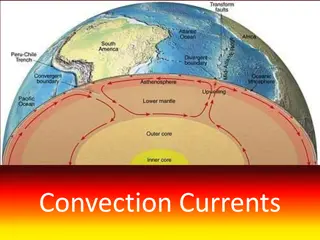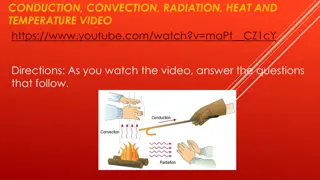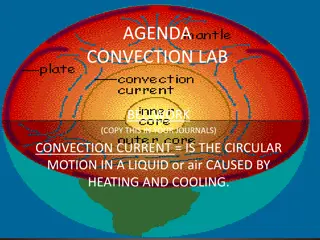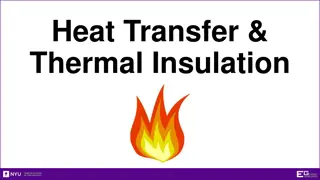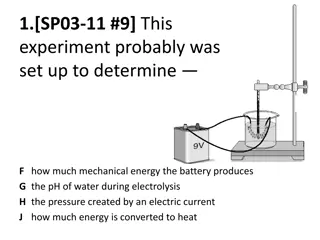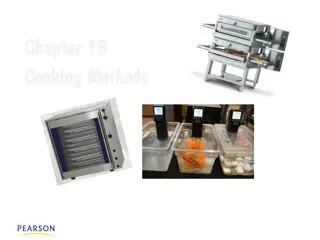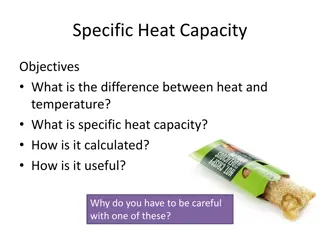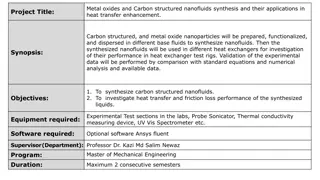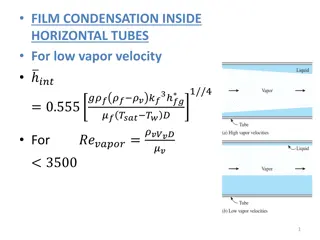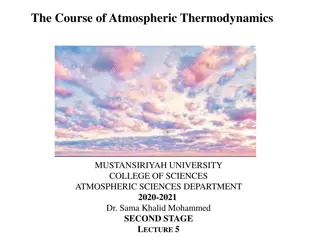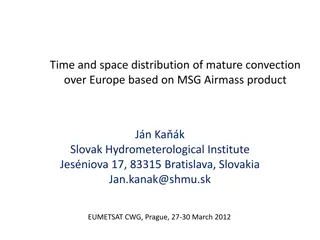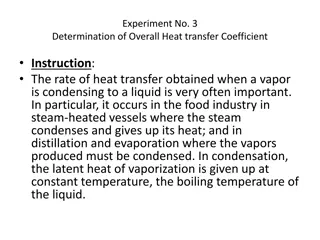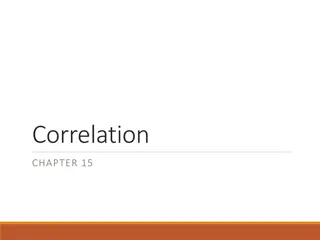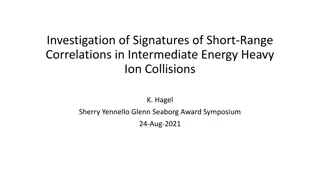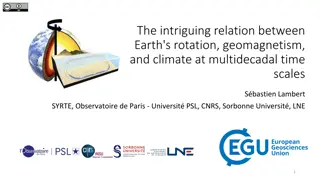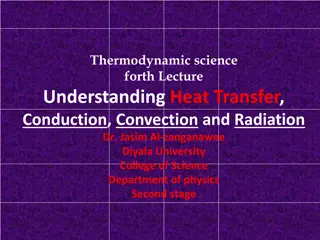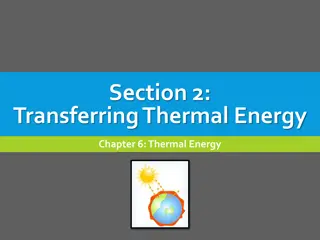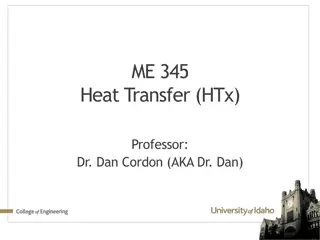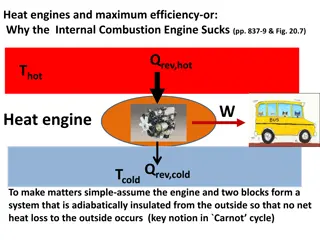Understanding Heat Transfer in Convection: Key Parameters and Correlations
Explore the fundamentals of heat transfer in convection, focusing on external flow, important dimensionless parameters like Nusselt and Sherwood numbers, empirical correlations, film temperature concept, and local laminar flat plate correlations. Learn about key concepts and equations used in analyzing heat transfer processes.
Download Presentation

Please find below an Image/Link to download the presentation.
The content on the website is provided AS IS for your information and personal use only. It may not be sold, licensed, or shared on other websites without obtaining consent from the author. Download presentation by click this link. If you encounter any issues during the download, it is possible that the publisher has removed the file from their server.
E N D
Presentation Transcript
ME 345 Heat Transfer (HTx) Professor: Dr. Dan Cordon (AKA Dr. Dan)
CLASSIFYING CONVECTION Type of Flow Impinging External Internal Laminar Developing Turbulent Fully Developed Mix of Both Be Purposeful About: ? local coefficient average coefficient
CONVECTION EXTERNAL FLOW Important Dimensionless Parameters for Heat Transfer Nusselt Number (dimensionless temperature gradient at surface used to find convection heat transfer coefficient Average Nusselt Number (used to find average convection heat transfer coefficient, not dependent on x*)
CONVECTION EXTERNAL FLOW Important Dimensionless Parameters for Mass Transfer Sherwood Number (dimensionless concentration gradient at surface used to find convection mass transfer coefficient Average Sherwood Number (used to find average convection mass transfer coefficient, not dependent on x*)
EMPIRICAL NUSSELT NUMBER CORRELATIONS Many controlled tests were performed to come up with an equation to calculate the Nusselt Number. This equation has the form: Where values of C, m, and n are usually independent of the fluid though they often vary with surface geometry and the type of flow. Picture to right shows several sets of experimental data used to find relationships for C and m.
FILM TEMPERATURE You may remember that variables in Re and Pr depend on fluid properties. We know that these properties change with temperature. To account for changes we simply use a mean boundary layer temperature, the film temperature . It is an average of the surface temperature and the bulk fluid temperature. The implications of this are that we assume the fluid properties to be constant. This isn t true, but also isn t usually a huge source of error.
LOCAL LAMINAR FLAT PLATE CORRELATIONS Velocity Boundary Layer Thickness: Local Friction Coefficient: Gasses ~ 0.75 Liquids ~ 10-10,000 Local Nusselt Number: Thermal Boundary Layer Thickness: Implications: If Pr = 1 = t
LOCAL LAMINAR FLAT PLATE CORRELATIONS Local Sherwood Number: Concentration Boundary Layer Thickness: Implications: If Sc = 1 = c Note: C, m, and n are the same for the Nusselt and Sherwood correlations. Remember, Sc is the Schmidt Number that is a ratio of momentum and mass diffusion
AVERAGE LAMINAR FLAT PLATE CORRELATIONS The laminar region is from 0 < x < xc where xc is the distance from the leading edge where transition begins. Average Friction Coefficient: Average Nusselt Number: Average Sherwood Number:
AVERAGE LAMINAR FLAT PLATE CORRELATIONS Pr and Sc for most gasses is going to be around 1.0. The implication here is that the velocity, thermal, and concentration boundary layers experience similar growth. However, some fluids (like liquid metal) have a very small Pr. In this case the thermal boundary layer develops much more rapidly than the velocity boundary layer. This special case gives us a few new relationships: Where Pex is the Peclet Number, calculated by: If you want an equation for the Nusselt Number that applies over all range of Prandtl Number, Churchill and Ozoe recommend:
LOCAL TURBULENT FLAT PLATE CORRELATIONS In turbulent flow all three boundary layers are nearly equal (does not depend on Pr or Sc since diffusion is nearly insignificant) Note: These correlations ONLY apply over the region that has turbulent flow. ???,? is Reynolds number at transition Local Friction Coefficient: Boundary Layer Thickness (all three) Local Nusselt Number: Local Sherwood Number:
AVERAGE MIXED FLOW CORRELATIONS Since a laminar region almost always precedes a turbulent region, to get an average Nusselt Number we need to do this for mixed flow. If the majority of the plate is laminar (95% or more) then just use the laminar equations Average Nusselt Number: Where Average Sherwood Number: Average Friction Coefficient:
SPECIAL CASE CONSTANT HEAT FLUX If there is constant heat flux rather than constant surface temperature we get a whole new set of correlations: Local Nusselt Number - Laminar: Local Nusselt Number - Turbulent: Average Nusselt Number Mixed Flow:
METHODOLOGY FOR CONVECTION PROBLEMS 1. Notice flow geometry (flat plate, cylinder, sphere). Convection correlation depends on flow geometry Select appropriate reference temperature to find fluid properties In mass transfer problems, fluid properties are of species B! Calculate the Reynolds Number to determine if flow is laminar, turbulent, or mixed Decide if you want a local or average convection number. Remember, local will give you a flux (heat or concentration) as a function of position. Average will give you information over the entire surface. Select the appropriate correlation. There are many to choose from (and FAR more than we will even cover in this course). Each one has errors and assumptions associated with it. 2. 3. 4. 5. 6.
EXAMPLE 7.1 Find: Cooling rate from bottom of plate to maintain specified temperature - q [W/m] Assumptions Steady state and constant fluid properties Ignore radiation HTx
EXAMPLE 7.1 @ film temperature ???????= ?????? ?????? ???????
EXAMPLE 7.1 Newton s Law of Cooling for the plate will be: Calculate the Reynolds Number at the end of the plate For external flow this is well below turbulent (Re > 5 x 105) Can use laminar correlations for laminar flow over a flat plate at constant temperature. Average Nusselt Number equation:
EXAMPLE 7.1 Average Convection Heat Transfer Coefficient : So the cooling rate per unit width is:
EXAMPLE 7.2 Find: Power requirement of the highest zone [W] Assumptions Steady state and constant fluid properties Ignore radiation HTx Bottom of plate is adiabatic First calculate the Reynolds Number for a single plate (50mm long) Approximate the location of transition from laminar to turbulent
EXAMPLE 7.2 Reynolds Number for a single plate (50mm long) If we assume transition occurs at Re = 5 x 105 this means the transition will happen somewhere on Plate 5. More specifically the location of transition will be: About the middle of Plate 5 We could analyze every plate, but we can probably make some good guesses at which are most likely to have highest power.
EXAMPLE 7.2 Guesses: Plate 1 is at the leading edge and will have the highest local laminar coefficient. Plate 5 will have the largest local turbulent coefficient, but part of the plate is laminar flow Plate 6 is entirely turbulent flow For each plate of interest we will calculate the average convection heat transfer coefficient over that plate. Plate 1 - Fully laminar
EXAMPLE 7.2 Plate 5 Mixed flow To calculate the heat from Plate 5 we need to calculate the heat from Plates1-5 then subtract off the heat from Plates1-4 This looks like: For Plates1-4
EXAMPLE 7.2 Plate 5 Mixed flow (continued) For Plates1-5 So the heat rate for Plate 5 is:
EXAMPLE 7.2 Plate 6 Turbulent flow We will calculate the heat from Plate 6 the same way we did for Plate 5, which is using heat from Plates1-6 then subtract off the heat from Plates1-5 This looks like: For Plates1-6
EXAMPLE 7.2 Plate 6 Turbulent flow (continued) So we have: Plate 6 = 1440 [W] Plate 1 = 1370 [W] Plate 5 = 1050 [W] Upcoming Challenge: Could you plot the local convection coefficient over the entire length from the leading edge to the trailing edge of Plate 6? Could you use that plot to calculate the average convection coefficient for each plate?



